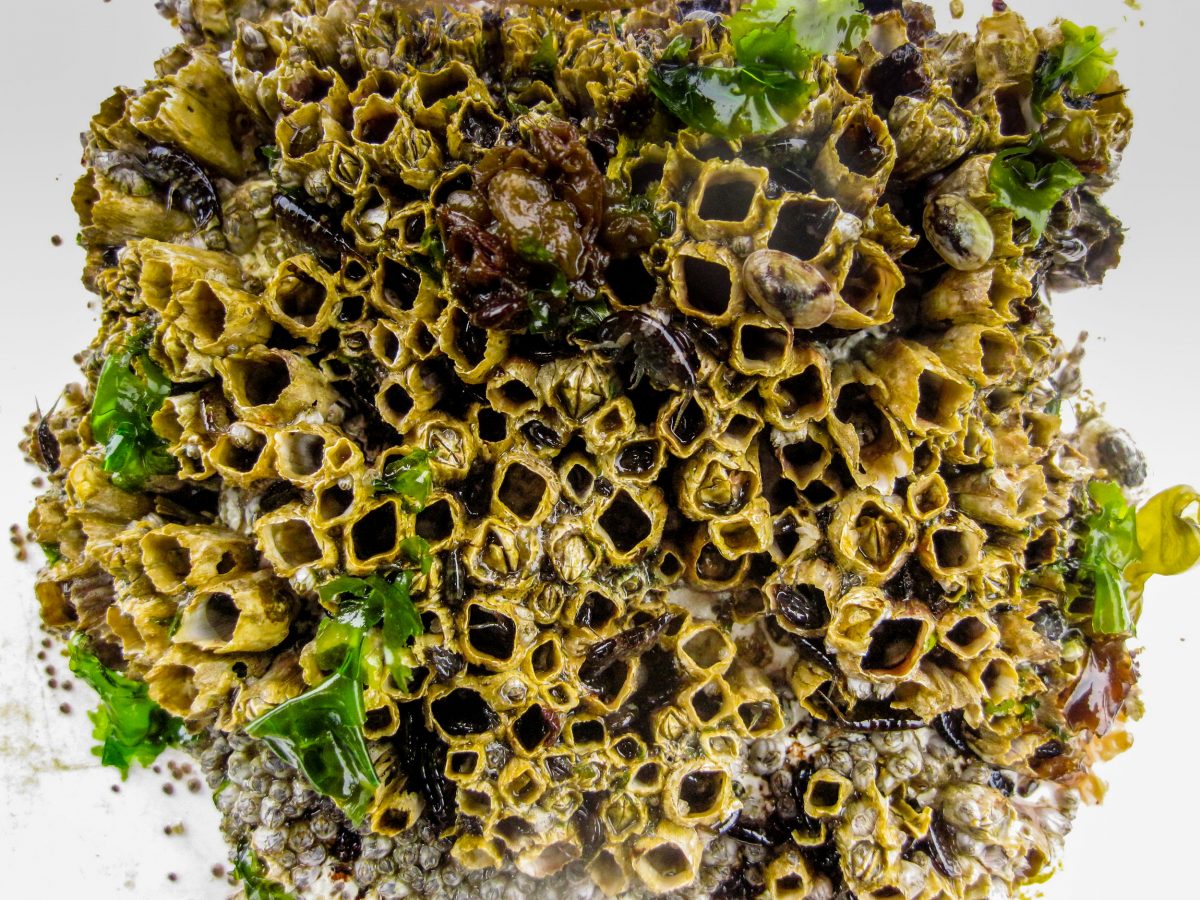LIMPETS
As the ocean temperature rises, it may be the little things that make the biggest difference to the survival and resilience of living things.
Take the limpet, a tiny snail-like gastropod with a hefty appetite for the minute plants that live in the intertidal—the space between low and high tide. In 2014, Becca Kordas, then a zoology doctoral candidate at the University of British Columbia, tested the effect these creatures have on the ecosystem when exposed to ocean warming. She found that their influence was huge.
Kordas launched her project by sinking four sets of settlement plates in the intertidal zone of Salt Spring Island, British Columbia, about 55 kilometers southwest of Vancouver. For 16 months, Kordas and her colleagues tracked which plants and animals established themselves on the four different types of plots. Kordas controlled the limpets’ access to half of the plates, while they were free to graze on the other half. She also simulated the effects of ocean warming by tinting some of the plates black to attract the sun’s heat.
By the end of the study, the differences between the four sets of plates were stark. Kordas found that when limpets’ access is restricted, the artificially warmed intertidal ecosystem collapsed—the diversity of life largely replaced by a mat of microalgae. Limpets with access to the plates, however, maintained a healthier ecological community, even in a warming environment.
What is it about limpets that helps maintain a diverse and complex community, even when their environment warms?
Kordas says limpets eat huge amounts of microalgae, including microscopic diatoms and the spores of larger algal species. This clears the terrain for a variety of life. “When limpets are allowed in, they make space for things like barnacles, and then those barnacles in turn create little condos for other animals to live in,” she says.
https://www.hakaimagazine.com
